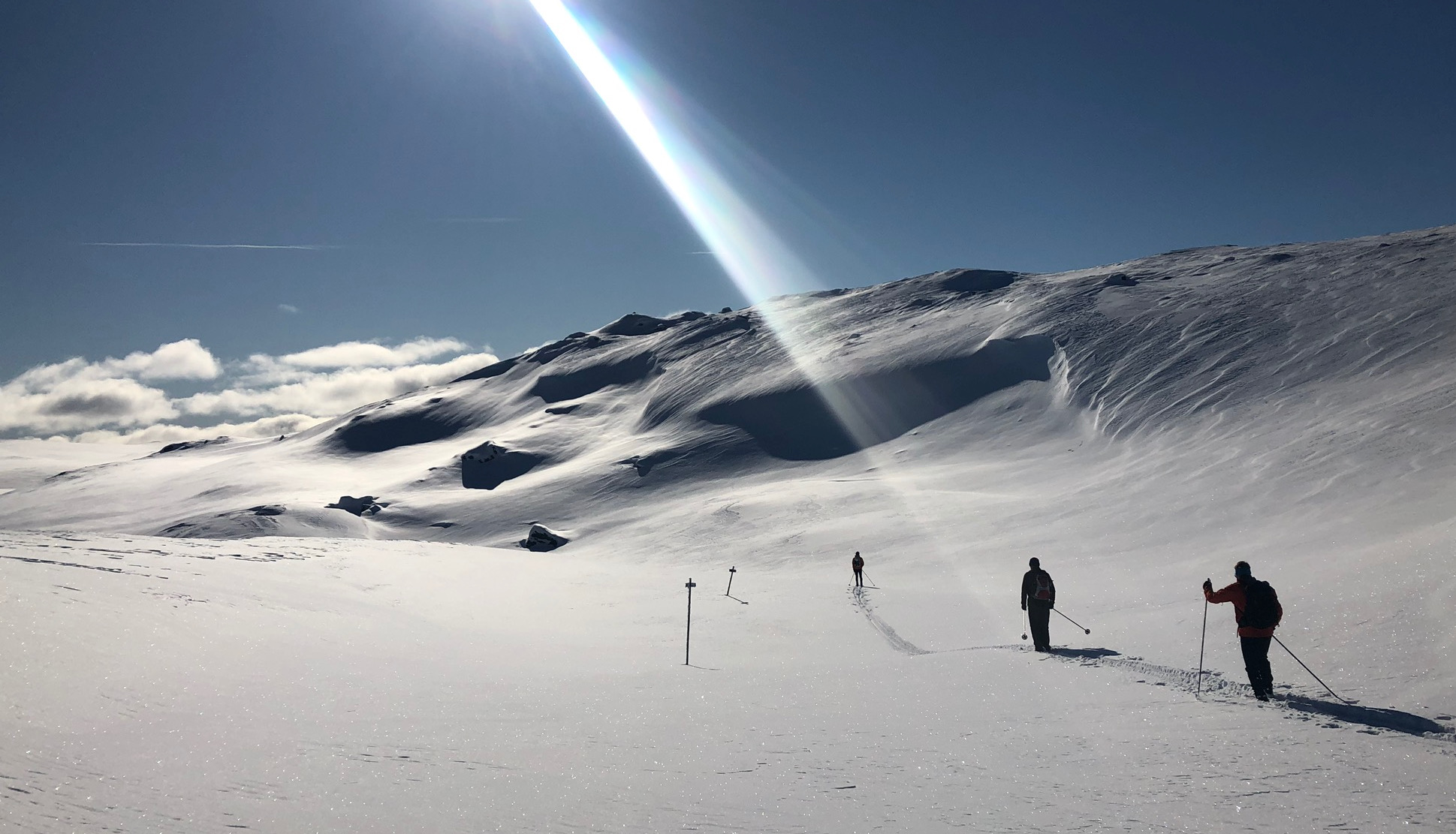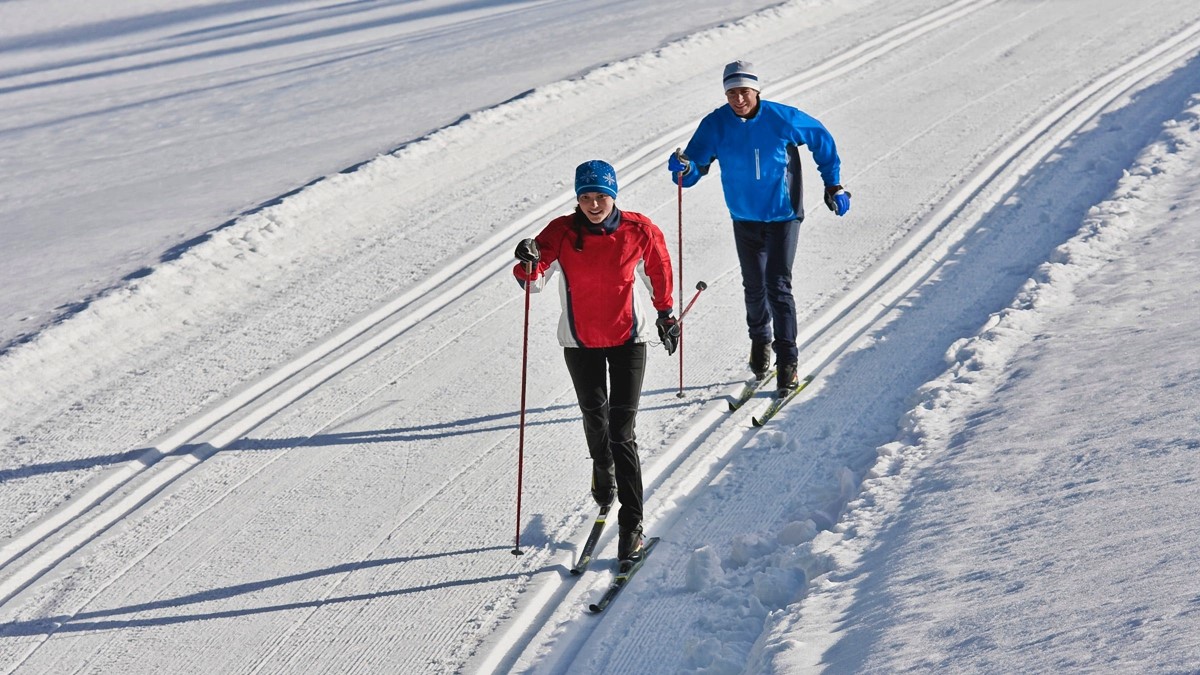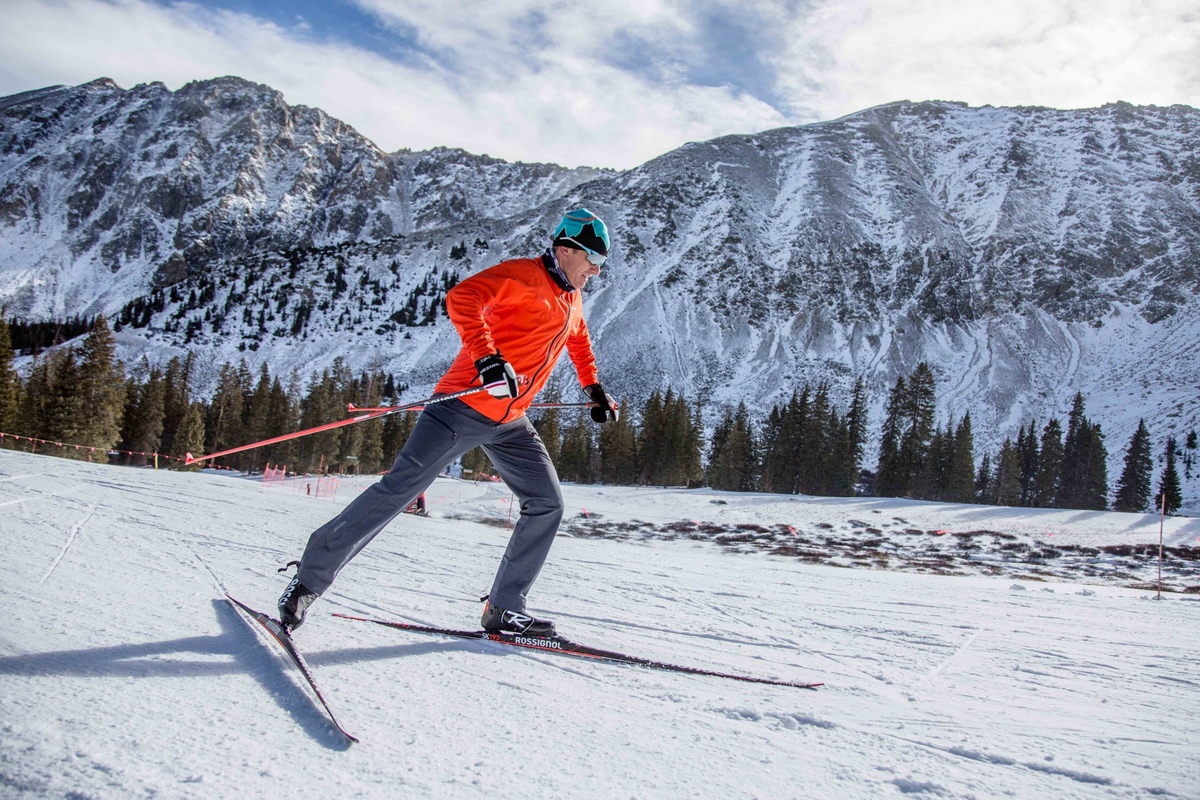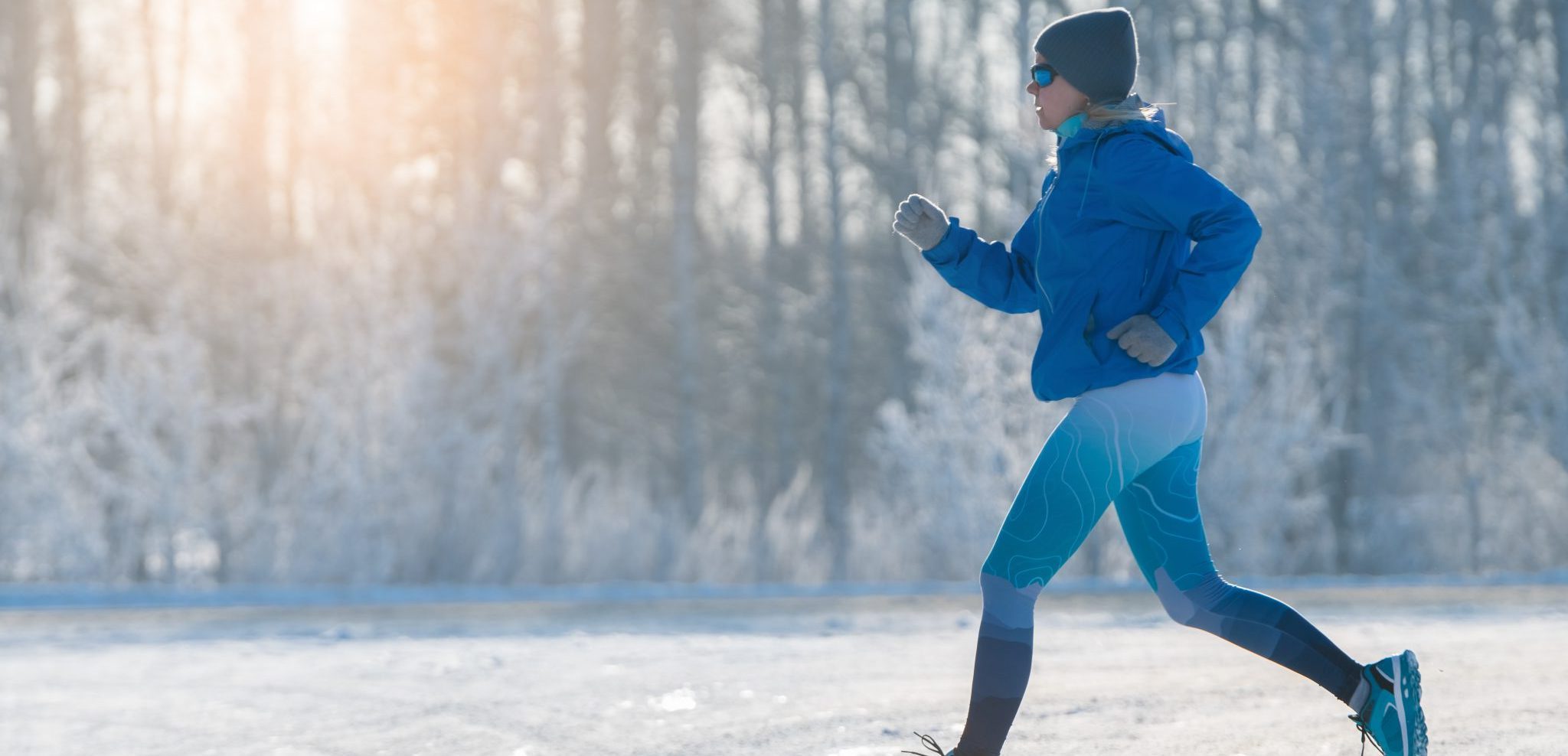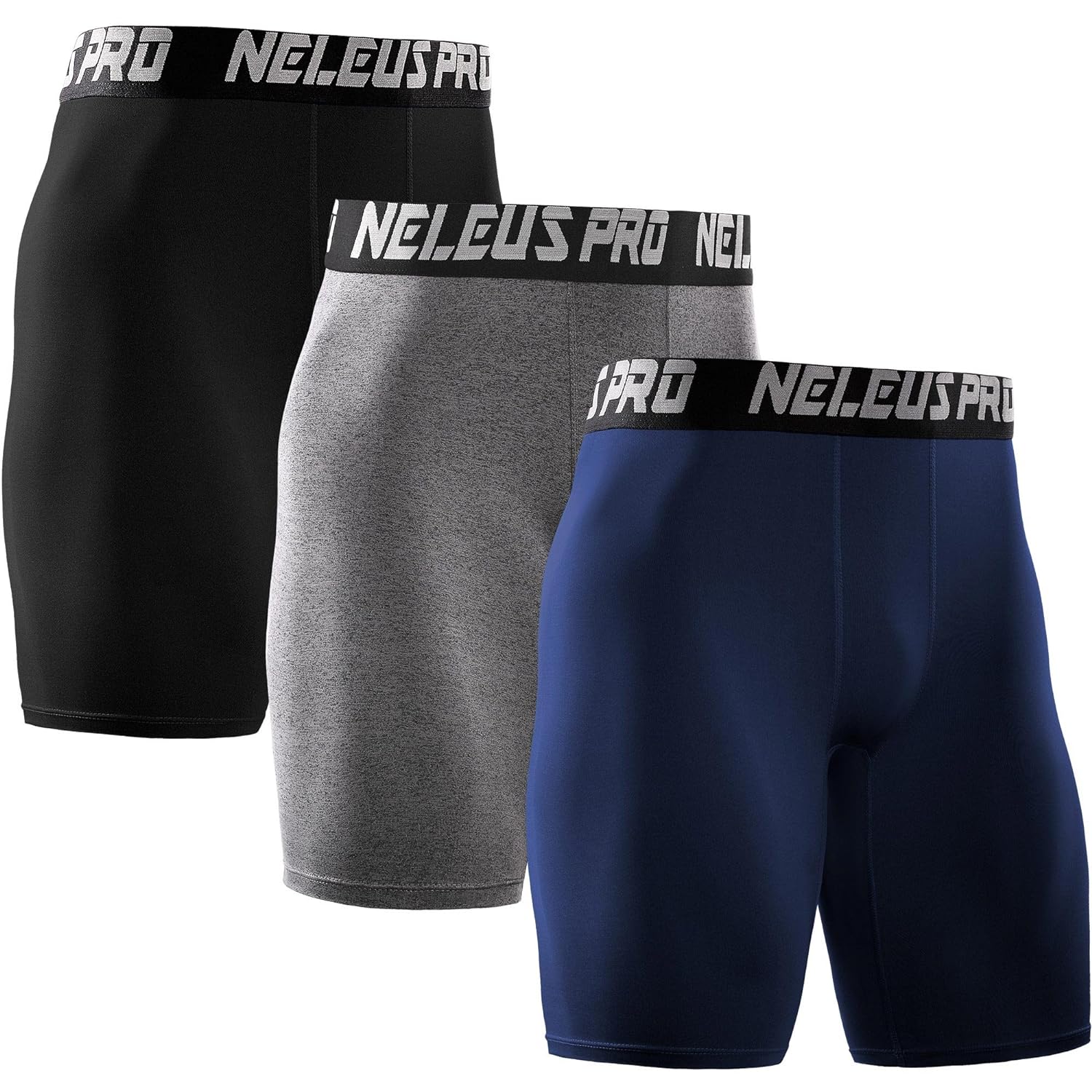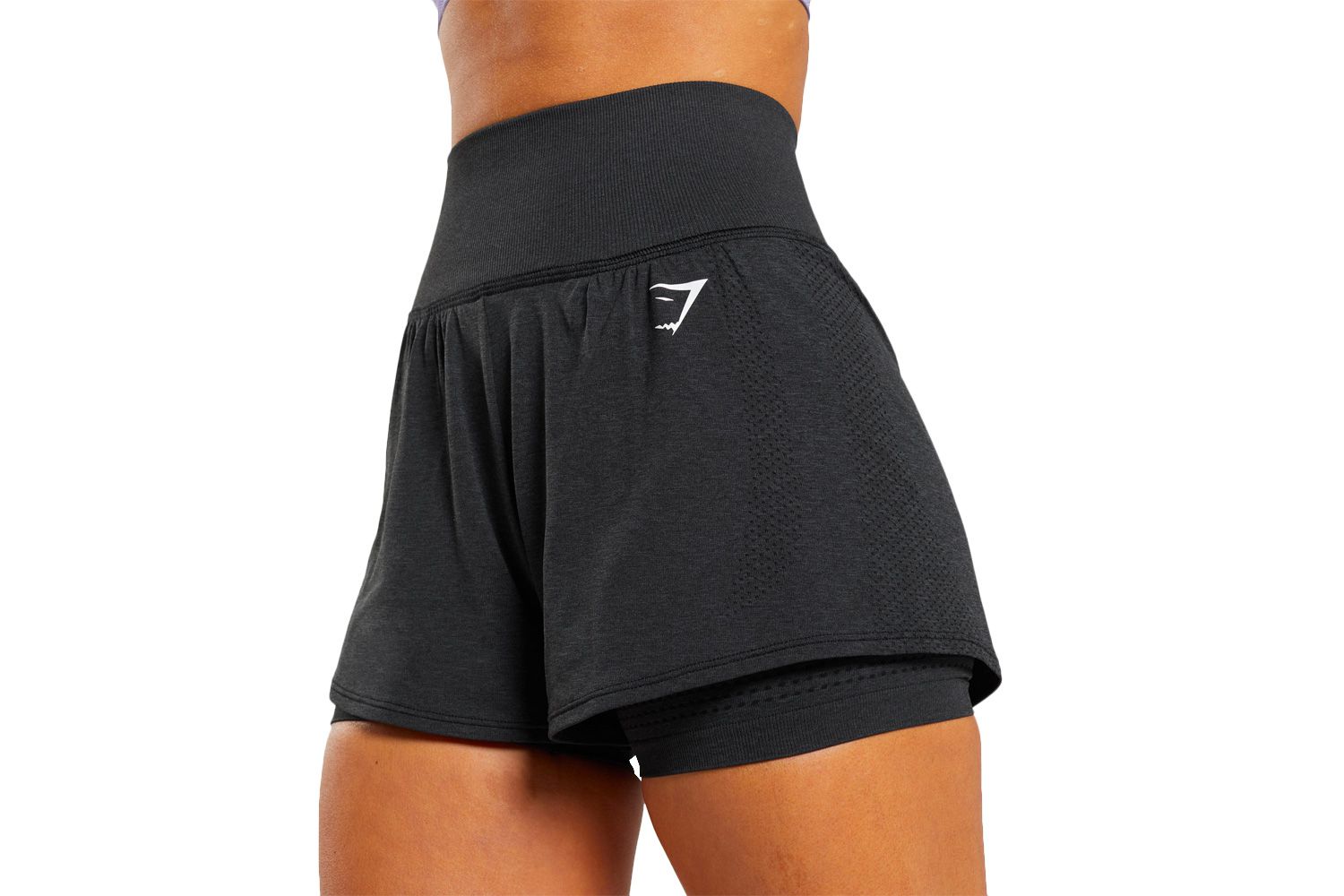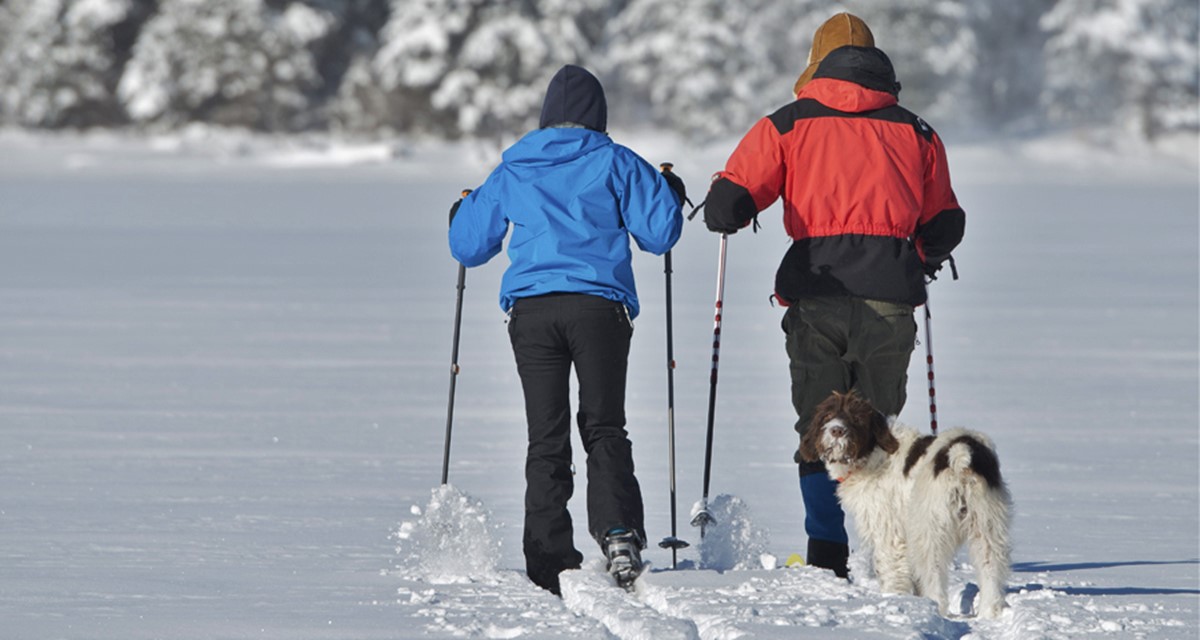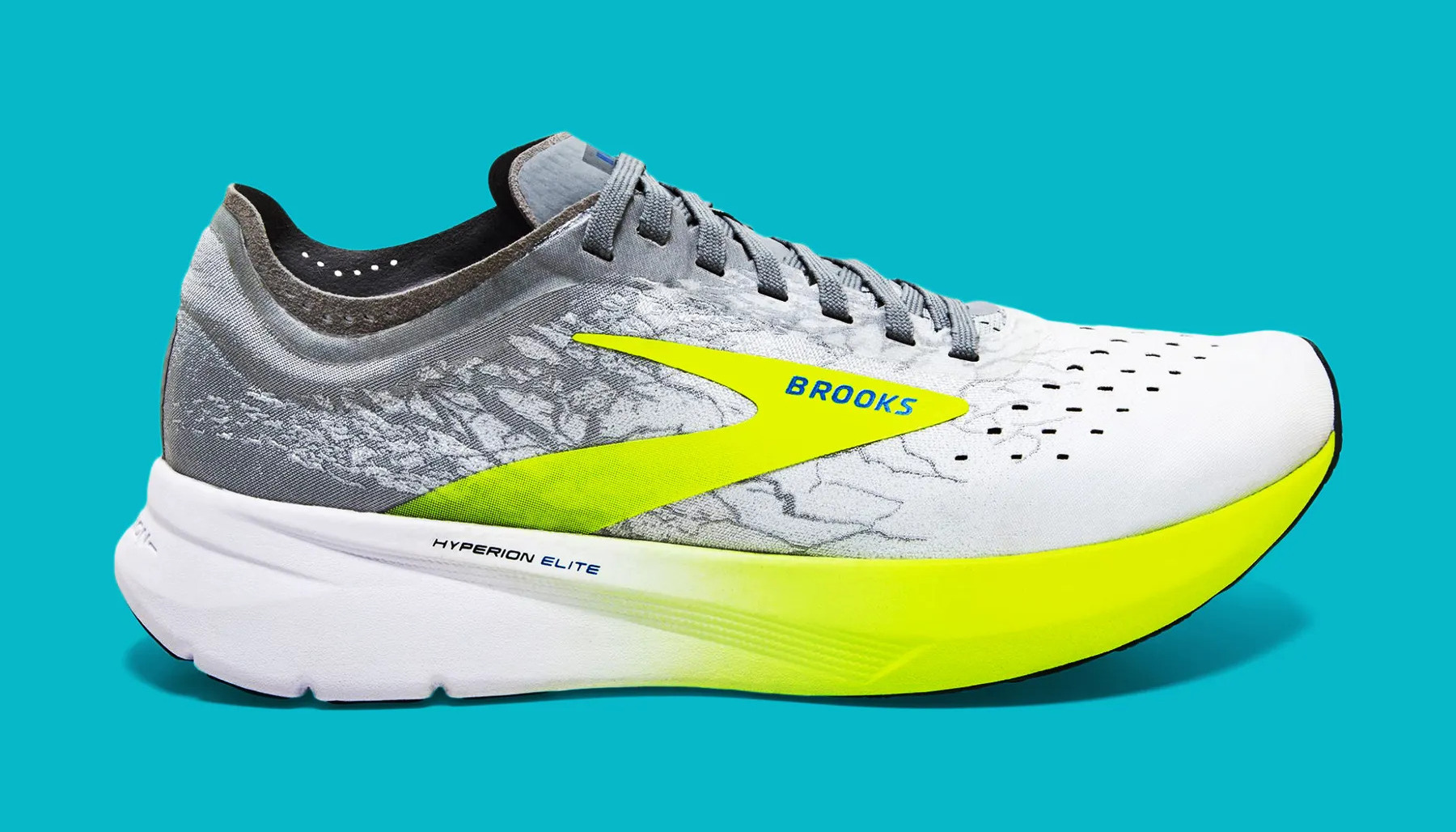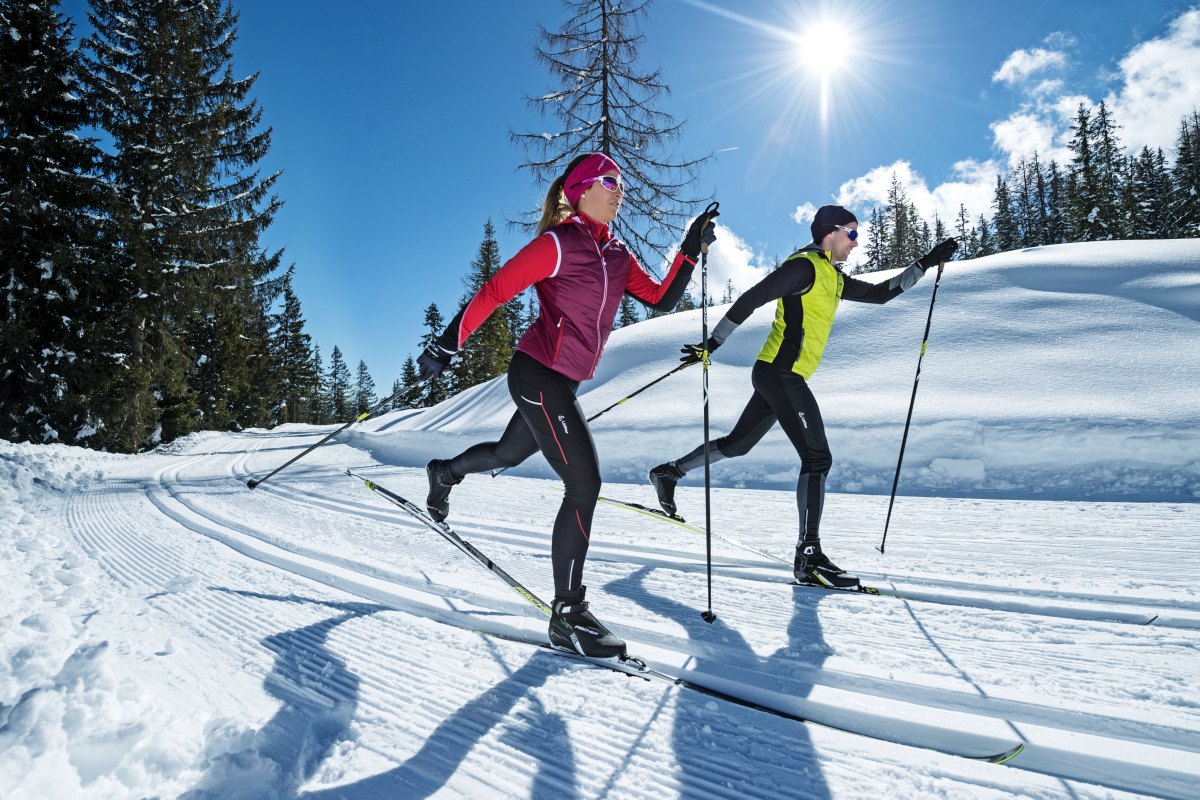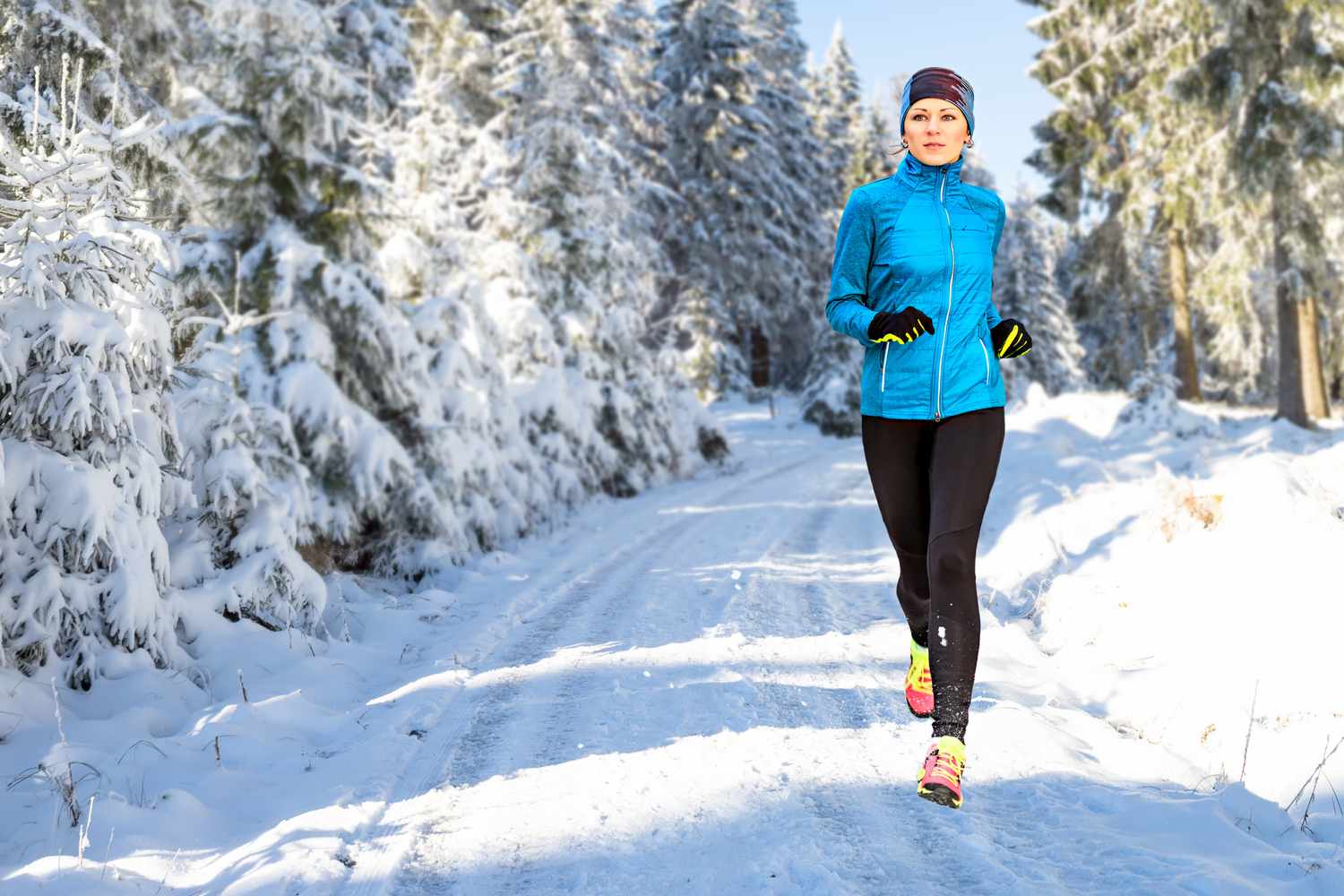

Featured
What To Wear When Jogging In Winter
Modified: August 18, 2023
Stay warm and stylish while jogging in winter with our Featured collection of winter jogging apparel. Find the perfect outfit to keep you comfortable and motivated during those chilly workouts.
Introduction
Welcome to the world of winter jogging! Jogging is a fantastic way to stay fit and healthy all year round, but when the temperature drops and snowflakes start to fall, you may find yourself wondering what to wear to keep warm and comfortable during your runs. The importance of proper winter jogging attire cannot be overstated. Not only will it protect you from the harsh elements, but it will also allow you to fully enjoy your workout without feeling the chill. In this article, we will explore the essential elements of a winter jogging outfit, from layering techniques to the right fabrics and accessories.
As the temperature drops, it becomes crucial to layer your clothing to trap and retain heat. Layering not only provides insulation but also allows you to regulate your body temperature during your run. Choosing the right fabrics is also important as they can help wick away moisture and keep you dry. Additionally, protecting your extremities, such as your head, hands, and feet, is vital as they tend to lose heat quickly.
Whether you are a seasoned runner or just starting out, jogging in extreme cold conditions requires some extra precautions. We will also provide you with some tips on how to safely jog in sub-zero temperatures.
So, if you’re ready to lace up your shoes and hit the winter wonderland for a refreshing jog, let’s dive into the world of winter jogging attire and discover how to make your runs comfortable, safe, and enjoyable even in the coldest months!
Importance of Proper Winter Jogging Attire
When it comes to jogging in winter, dressing appropriately is crucial for your comfort, safety, and overall enjoyment of the activity. Proper winter jogging attire not only protects your body from the cold but also helps regulate your body temperature and prevents overheating or excessive sweating.
One of the main challenges of winter jogging is dealing with fluctuating temperatures. You may start your run feeling chilly, but as your body warms up, you may quickly become overheated if you’re not wearing the right clothing. This is where layering becomes essential.
Layering is the key to staying warm without getting too hot. It allows you to add or remove layers based on your body temperature and the outside conditions. The base layer should be moisture-wicking and breathable, such as a lightweight synthetic material or merino wool, to keep sweat away from your skin and prevent you from feeling damp and chilled.
The middle layer should provide insulation and retain heat. Look for materials like fleece or insulated down jackets that trap warm air close to your body. Depending on the temperature, you may need to add or remove a middle layer to ensure optimal comfort throughout your run.
Finally, the outer layer or shell should protect you from wind, rain, and snow. Look for a jacket that is both waterproof and breathable, with features like a hood, adjustable cuffs, and ventilation pockets. This outer layer will shield you from the elements and keep you dry.
Choosing the right fabrics is just as important as layering. Avoid cotton as a base layer, as it retains moisture and can leave you feeling cold and clammy. Opt for synthetic materials like polyester or nylon, or natural fibers like merino wool, which have excellent moisture-wicking properties.
In addition to the clothing layers, don’t forget about your head, hands, and feet. These extremities are particularly vulnerable to the cold and need extra protection. Wearing a thermal hat or headband can prevent heat loss from your head, while insulated gloves or mittens will keep your hands warm. Invest in a pair of winter running socks that provide insulation and moisture-wicking properties to keep your feet dry and comfortable.
Proper winter jogging attire not only ensures your comfort but also enhances your safety. When your body is warm and your muscles are properly protected, you are less prone to injuries and muscle cramps that can occur in cold conditions.
Remember, the key to enjoying winter jogging is dressing appropriately for the temperature and weather conditions. By layering your clothing, choosing the right fabrics, and protecting your extremities, you can stay warm, comfortable, and safe during your winter running adventures.
Layering for Warmth
When it comes to jogging in winter, layering is your best friend. It is the key to staying warm, regulating your body temperature, and maximizing your comfort throughout your run. The layering technique allows you to adjust your clothing based on the weather conditions and your level of exertion.
The first layer, also known as the base layer, is the closest to your skin. Its primary function is to wick away moisture, keeping you dry and preventing the chilling effect of sweat. Look for base layers made of moisture-wicking fabrics like polyester or merino wool. These materials are excellent at pulling sweat away from your skin and drying quickly.
The second layer, often referred to as the insulation layer, provides warmth by trapping air close to your body. This layer should be thicker and provide good insulation without adding unnecessary bulk. Fleece jackets or pullovers are popular choices for the insulation layer as they are lightweight, breathable, and offer excellent insulation properties.
Finally, the outer layer, also known as the shell layer, acts as a protective barrier against wind, rain, and snow. It should be windproof, waterproof, and breathable to keep you dry and comfortable. Look for jackets made of materials like GORE-TEX or other high-performance fabrics that offer both waterproofness and breathability.
When choosing clothing for each layer, consider the temperature and weather conditions. If it’s a particularly cold day, you may want to add an extra insulation layer or invest in a thicker base layer. On milder days, you might opt for a lighter base layer and a thin insulation layer. The beauty of layering is that you can adjust as needed to find the perfect balance of warmth and breathability.
Additionally, don’t forget about your lower body. Layering applies to your legs as well. Consider wearing thermal leggings or tights as your base layer. On top, you can add a pair of running pants or joggers made of a windproof and water-resistant material.
Remember that layering is not only about adding more clothing but also about being prepared to remove layers when necessary. As your body warms up during your run, you may start to feel too hot. Unzipping or removing a layer allows excess heat to escape and keeps you from getting uncomfortably sweaty.
Experiment with different layering combinations to find what works best for you. Pay attention to how you feel during your runs and make adjustments accordingly. The goal is to find the right balance of comfort and protection, so you can fully enjoy your winter jogging experience.
Choosing the Right Fabrics
When it comes to winter jogging attire, choosing the right fabrics is just as important as layering. The fabrics you select can make a significant difference in how well your clothing performs in terms of moisture-wicking, insulation, and breathability.
One of the most crucial factors to consider is moisture-wicking. Moisture-wicking fabrics pull sweat away from your skin and allow it to evaporate quickly, keeping you dry and comfortable. Synthetic materials like polyester and nylon are excellent at wicking away moisture. They have a quick-drying property that helps prevent the buildup of sweat on your skin, reducing the risk of feeling cold and clammy.
Another popular choice for moisture-wicking base layers is merino wool. While wool might sound too warm for jogging, merino wool is different. It has natural moisture-wicking properties and can regulate your body temperature efficiently. Merino wool is also known for being odor-resistant, making it a great choice for long runs where you don’t want to worry about unpleasant smells.
Insulation is another key aspect to consider. Look for fabrics that provide excellent insulation without excessive weight or bulkiness. Fleece is a popular choice for insulation layers due to its warmth-to-weight ratio. It traps heat effectively while remaining lightweight and breathable. Additionally, down jackets or synthetic insulations like PrimaLoft can provide exceptional warmth without adding much weight to your overall outfit.
For the outer layer or shell, you need fabrics that are windproof and waterproof to protect you from the elements. One popular option is jackets made with GORE-TEX, a highly durable and breathable material that effectively blocks wind and rain while allowing perspiration vapor to escape. Other waterproof and windproof materials like DWR (Durable Water Repellent) treated fabrics can also offer excellent protection without sacrificing breathability.
Additionally, consider the stretch and flexibility of the fabrics. Jogging requires a full range of motion, so it’s essential to choose materials that allow you to move freely. Look for fabrics with some degree of stretch, such as spandex blends or fabrics with built-in stretch technology. These fabrics will move with your body and provide unrestricted motion.
Lastly, pay attention to the care instructions for the fabrics you choose. Some fabrics may require specific washing or drying methods to maintain their performance and durability. Always follow the care instructions provided by the manufacturer to ensure your clothing stays in optimal condition.
By choosing the right fabrics that prioritize moisture-wicking, insulation, breathability, and flexibility, you can enhance your winter jogging experience. Your clothing will keep you comfortable, dry, and protected, allowing you to focus on your run and enjoy the crisp winter air.
Headwear and Accessories
When it comes to winter jogging, headwear and accessories play a vital role in keeping you comfortable and protected from the elements. In cold temperatures, a significant amount of heat can be lost through your head, so covering it with the right hat or headband is essential.
Thermal hats or beanies made of materials like fleece or wool are excellent choices for winter jogging. They provide insulation, keep your head warm, and help retain body heat. Look for hats that cover your ears as well, as these are particularly sensitive to the cold. For those who prefer a more versatile option, headbands made of moisture-wicking fabrics can provide warmth for your ears while allowing heat to escape from the top of your head.
In addition to headwear, accessories such as neck gaiters or buffs can offer extra protection for your neck and face. These versatile tubular garments can be worn in multiple ways, from covering your neck and mouth to pulling them up over your nose and ears for added warmth. Look for neck gaiters made with moisture-wicking fabrics that provide insulation and breathability.
Protecting your hands is also crucial during winter jogging. Exposed hands can quickly become cold and uncomfortable, affecting your overall running experience. Invest in a pair of insulated gloves or mittens explicitly designed for cold weather activities. Look for gloves with touchscreen compatibility, so you can use your smartphone without having to remove them.
When it comes to footwear, make sure to choose winter-specific running shoes. These shoes are designed to provide better traction and stability on snowy or icy surfaces. Look for shoes with a durable outsole made of rubber compounds that offer excellent grip. Some winter running shoes also feature waterproof or water-resistant uppers to keep your feet dry in wet conditions.
Along with proper footwear, don’t forget about your socks. Invest in moisture-wicking and insulated socks specifically designed for winter running. These socks will keep your feet dry and provide extra warmth. Look for materials like merino wool or synthetic blends that offer both insulation and breathability.
One final accessory to consider is reflective gear. Winter days are often shorter and darker, so it’s crucial to make yourself visible to motorists and other pedestrians. Wear reflective vests, jackets, or armbands to ensure you are seen even in low-light conditions.
Remember, headwear and accessories are not just fashion statements; they serve a practical purpose in protecting you from the cold, wind, and snow. By selecting the right headwear, gloves, socks, and reflective gear, you can stay comfortable, safe, and stylish during your winter jogging adventures.
Footwear for Winter Jogging
When it comes to winter jogging, having the right footwear is crucial for your safety and comfort. Snow, ice, and wet surfaces can pose significant challenges, so it’s important to choose shoes that provide excellent traction and stability.
Winter-specific running shoes are designed with features that help you navigate through icy or slippery conditions. Look for shoes with a durable outsole made of rubber compounds that offer exceptional grip on various surfaces. The outsole should have deep lugs or patterns that provide traction and prevent you from slipping.
Waterproof or water-resistant uppers are also essential for winter running shoes. They keep your feet dry in wet conditions and help protect against snow and slush. Look for shoes with a GORE-TEX or similar membrane that provides waterproofness while allowing moisture to escape, keeping your feet dry and preventing the buildup of sweat.
Insulation is another crucial factor to consider. Your feet are vulnerable to the cold, and adequate insulation will keep them warm during your run. Some winter running shoes feature a thermal lining or an extra layer of insulation to provide warmth without sacrificing breathability. Look for shoes with insulation suitable for the temperature range you will be running in.
Fit is just as important in winter running shoes as it is in any other footwear. Make sure the shoes have a snug but comfortable fit, with enough room for your toes to wiggle. Consider that you may need to wear thicker socks during the winter, so it’s important to have enough space in the shoe to accommodate them without feeling cramped.
In addition to proper shoes, investing in winter running socks is also essential. Look for socks made of moisture-wicking materials that keep your feet dry and prevent blisters. Insulated socks made of materials like merino wool or synthetic blends will provide additional warmth. Make sure the socks fit well and are not too tight, as this can restrict circulation and lead to discomfort.
Finally, consider using gaiters to keep snow and debris out of your shoes. Gaiters are worn over the ankles and cover the area between your shoes and lower legs. They prevent snow, water, and other debris from entering your shoes, keeping your feet dry and protected throughout your run.
Remember, proper footwear for winter jogging is essential to ensure your safety and enjoyment. With the right shoes, you can navigate through winter conditions with confidence, maintain good traction, and protect your feet from the cold and wet. Invest in high-quality winter running shoes and socks to make your winter runs both safe and comfortable.
Protecting Your Hands and Feet
When it comes to winter jogging, protecting your hands and feet is crucial for your comfort and overall well-being. Exposed extremities can quickly become cold, numb, and uncomfortable, making it challenging to enjoy your run. Fortunately, there are several ways to keep your hands and feet warm and protected in the cold weather.
Let’s start with your hands. Investing in a good pair of running gloves or mittens is essential. Look for gloves specifically designed for cold weather activities, with insulation to keep your hands warm. Thermal gloves made of materials like fleece or synthetic blends are popular choices as they provide both insulation and breathability.
If you prefer more dexterity and control over your fingers, consider using gloves with touchscreen compatibility. These gloves have conductive material on the fingertips, allowing you to use your smartphone or other touchscreen devices without having to remove the gloves.
For extreme cold conditions, mittens are an excellent option as they provide superior warmth by keeping your fingers together. Look for mittens made of insulated materials like down or synthetic insulation, which will help trap heat and keep your hands cozy.
When it comes to your feet, wearing the right socks can make a significant difference in keeping them warm and comfortable during your winter runs. Look for moisture-wicking socks specifically designed for winter running. These socks are typically made with materials like merino wool or synthetic blends that provide insulation and keep your feet dry.
Consider wearing thicker socks compared to your regular running socks to provide additional insulation and cushioning. However, make sure the socks still fit comfortably in your shoes and do not restrict circulation.
Keeping your feet dry is also crucial. Look for socks with moisture-wicking properties to prevent sweat buildup, which can lead to cold and clammy feet. Some winter running socks offer additional features like seamless toes to prevent blisters and padded soles for extra comfort.
In addition to proper socks, wearing the right shoes is essential for protecting your feet during winter runs. Look for winter-specific running shoes that offer excellent traction on snowy or icy surfaces. These shoes typically have a durable outsole with deep lugs or specialized rubber compounds that provide grip and prevent slipping.
Consider using toe warmers or foot warmer inserts for added warmth during extremely cold runs. These small self-adhesive heat packs can provide hours of warmth to your toes, helping to ward off the cold and maintain comfort.
Remember, taking care of your hands and feet during winter jogging is essential for both comfort and safety. By wearing the right gloves or mittens, moisture-wicking socks, and proper footwear, you can keep your extremities warm, dry, and protected, allowing you to fully enjoy your winter runs.
Tips for Jogging in Extreme Cold Conditions
Jogging in extreme cold conditions requires extra precautions to ensure your safety and well-being. While it’s important to stay active, it’s equally important to take the necessary steps to protect yourself from the harsh winter elements. Here are some tips to help you safely and comfortably continue jogging in extreme cold conditions.
1. Dress in layers: Layering your clothing is essential in extreme cold. Start with a moisture-wicking base layer, add an insulating layer, and finish with a waterproof and windproof outer layer. This will allow you to regulate your body temperature and protect yourself from the cold, wind, and snow.
2. Protect your extremities: Your hands, feet, and head are particularly vulnerable to the cold. Wear thermal gloves or mittens, insulated socks, and a thermal hat or headband to keep them warm and protected. Consider using hand and foot warmers for additional warmth during extremely cold runs.
3. Warm up indoors: Before heading outside, warm up your muscles indoors. Do some dynamic stretching exercises and light cardio to get your blood flowing. This will help prevent injury and make your body more responsive to the cold temperatures.
4. Choose well-lit routes: In winter, daylight hours are shorter, and visibility can be reduced. Choose well-lit routes or use reflective gear to ensure you are visible to motorists and other runners. Safety should always be your top priority.
5. Stay hydrated: Despite the cold, staying hydrated is still essential. Cold air can be dehydrating, so drink water before, during, and after your run. Consider using an insulated water bottle to prevent your water from freezing during your run.
6. Modify your pace and distance: Running in extreme cold conditions can be more challenging. Adjust your pace and distance accordingly to give your body the chance to acclimate to the cold. Listen to your body and know when to cut your run short if necessary.
7. Be cautious of icy surfaces: Watch out for icy patches or slippery surfaces, especially when temperatures fluctuate. Take shorter strides and slow down when running on ice. Consider using traction cleats or shoes with built-in traction for added grip.
8. Don’t forget sunscreen: Even in winter, the sun’s rays can be harmful. Protect your skin by applying sunscreen, particularly to exposed areas like your face, neck, and hands. Look for a broad-spectrum sunscreen with an SPF of 30 or higher.
9. Listen to your body: Pay close attention to how your body is reacting to the cold. If you experience numbness, extreme discomfort, or any signs of frostbite or hypothermia, stop running immediately and seek warmth. Your health and well-being should always come first.
10. Buddy up: Consider jogging with a friend or joining a running group during extreme cold conditions. Having a companion not only adds a layer of safety but can also provide motivation and support during challenging winter runs.
Remember, extreme cold conditions require extra precautions. By following these tips and using common sense, you can safely continue your jogging routine even in the coldest of weather. Stay warm, stay safe, and enjoy the exhilarating experience of winter jogging!
Conclusion
As the temperature drops and winter sets in, it’s important to adapt your jogging attire to stay warm, comfortable, and safe during your runs. By understanding the importance of proper winter jogging attire, layering for warmth, choosing the right fabrics, and protecting your hands and feet, you can optimize your winter running experience.
Layering your clothing allows you to regulate your body temperature and stay comfortable throughout your run. The right fabrics, such as moisture-wicking and insulating materials, help keep you dry and warm, while waterproof and windproof outer layers provide protection from the elements.
Don’t forget to pay attention to your headwear and accessories. Keep your head and ears warm with thermal hats or headbands, and consider using neck gaiters or buffs for added protection. Invest in insulated gloves or mittens to shield your hands from the cold, and wear moisture-wicking and insulated socks to keep your feet dry and warm.
When jogging in extreme cold conditions, it’s crucial to take extra precautions. Dress in layers, choose well-lit routes, and stay hydrated. Modify your pace and distance, be cautious of icy surfaces, and always listen to your body’s signals. Consider jogging with a buddy or joining a running group for added safety and motivation.
Winter jogging can be a refreshing and invigorating experience, allowing you to stay active and connected with nature even in cold weather. With the right attire and proper precautions, you can continue to enjoy the benefits of jogging throughout the winter season.
So, lace up your shoes, bundle up in your layers, and embrace the beauty of winter as you hit the streets or trails. Stay warm, stay safe, and happy running!
